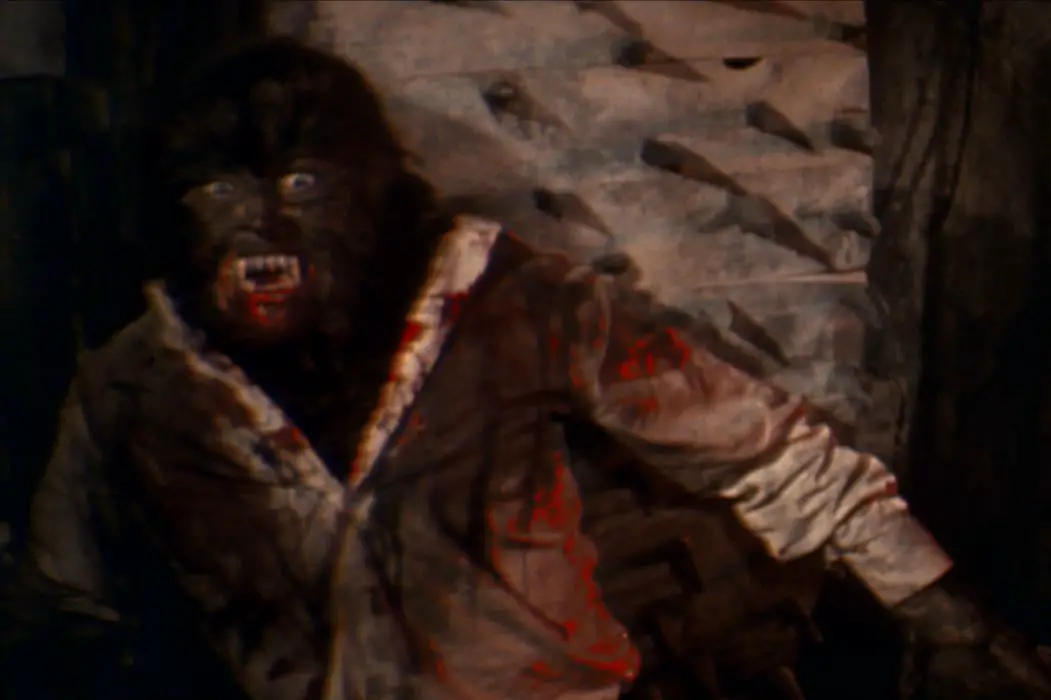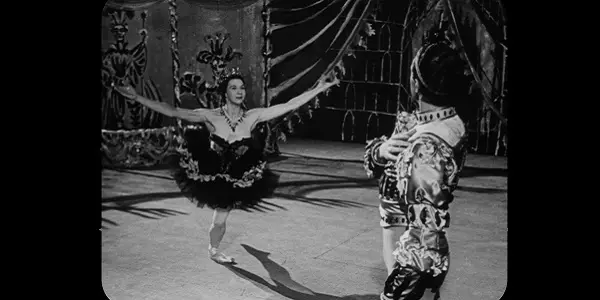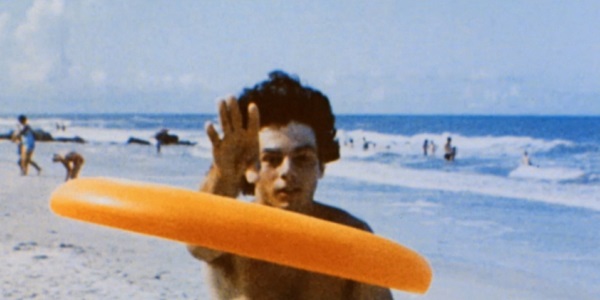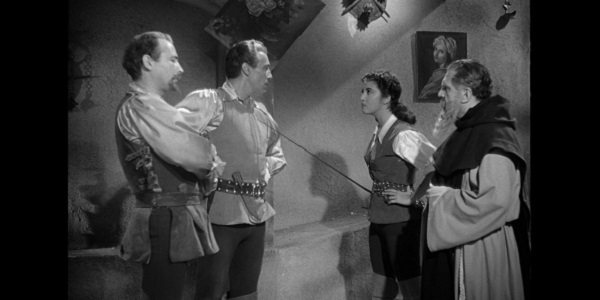3-D RARITIES, VOLUME II: A Quirky Collection Of Cultural Oddities

Lee Jutton has directed short films starring a killer toaster,…
The 3-D Film Archive has worked to locate, save, assemble, and restore rare and presumed lost 3-D films for decades. This is a very different type of 3-D than what you might have seen on the big screen in the form of James Cameron’s epic Avatar and other twenty-first-century blockbusters; made between 1922 and 1983, these films pioneered the art form of stereoscopic cinema.
In 2015, a selection of those films was released on Blu-ray in partnership with Flicker Alley as 3-D Rarities and greeted with great enthusiasm by fans of this mostly forgotten period of film history. So, naturally, Flicker Alley and the 3-D Film Archive have teamed up again to release another set of expertly curated 3-D oddities, 3-D Rarities, Volume II. While you’re not going to be able to appreciate the 3-D unless you own the requisite technology (including a 3-D HDTV, 3-D Blu-ray player and, of course, 3-D glasses), the set nonetheless provides a unique glimpse into an era and an art form that would have otherwise been forgotten. (And don’t worry – if you don’t have 3-D technology at home, the films look absolutely normal in 2-D, with none of that funky blurring effect you get when you take off your glasses during a 3-D movie in theaters.)
Journey Into Another Dimension
3-D Rarities, Volume II is divided into three sections. The first is a collection of shorts covering a wide range of subjects and genres, the crown jewel of which is the previously presumed lost short comedy film A Day in the Country (1941). Shot in stereoscopic black and white in Sussex, New Jersey with the original title of Stereo Laffs, it’s a relatively simple and silly short film chronicling, well, a day out in the country. It features numerous sequences clearly designed to take advantage of the 3-D aspect of the production, the prime example of which is a group of girls doing a dance with veils outside for seemingly no reason other than to make audience members think the veils were going to fly right off the screen and into their faces. Other such moments include milk bottles flying down a chute straight into the screen and some wayward cars swerving and crashing right into the camera, making A Day in the Country the purest example of 3-D for comedic purposes that you’ll find in this collection and elsewhere.

A Day in the Country is followed by The Black Swan (1952), a short ballet film created by British 3-D master Raymond Spottiswoode; Spottiswoode pioneered various aspects of the art form, including a “floating window” optical printing technique that superimposed a permanent negative parallax mask around the image. We’re then treated to a collection of stereoscopic stills from the mid-twentieth century dubbed Mid-Century Memories in Kodachrome Stereo. With commentary from stereo anthropologist Hillary Hess, this slideshow takes the audience on a delightful journey into the past that you can appreciate even without the use of 3-D technology.
The other shorts in this collection include the long-lost and relatively mysterious Games in Depth (1966), of which little is known other than Polaroid was involved in the production; the trailer for the West German-Spanish horror feature La Marca Del Hombre Loco (1968), shot in 70mm 3-D; and what is quite possibly the weirdest thing in the whole collection, the trailer for an aborted feature film titled simply The 3-D Movie (1983). A seemingly schizophrenic collection of content with only one thing in common – being shot in 3-D – this trailer is overwhelming in its sheer scope. It includes numerous clips from fictional 3-D films as well as documentaries, and boasts the presence of key cultural figures ranging “from Adolf Hitler to Marilyn Monroe.” Why anyone would want to see Hitler in 3-D is beyond me, but nonetheless, this trailer takes you on a wild walk through the twentieth century at hyperspeed.

From Castles to Cafes
The centerpiece of 3-D Rarities Volume II is the first 3-D film ever produced in Mexico, El Corazón y la Espada (1953). A feature-length historical romance and adventure film starring Cesar Romero (Batman) and Katy Jurado (High Noon), it’s a delightful romp that is guaranteed to entertain regardless of format. Set in 15th century Spain, the film focuses on the attempt of three swashbucklers to invade a castle occupied by a Moorish Caliph.
Each member of the trio has a different reason for embarking on this quest: Don Pedro de Rivera (Romero) is the rightful owner of the castle and seeks to take back his home, Juan Ponce de León (Tito Junco) wants to steal a rare gem owned by the Caliph that supposedly holds the key to eternal youth, and Lolita (the effervescent Jurado) wants the castle’s alchemist to give her the secret to producing gold so she can finally live in luxury. The three adventurers, all of whom are a keen hand with a sword, are aided in their quest by the castle’s resident friar, Padre Angélico (Miguel Ángel Ferriz). However, in their attempt to invade the castle, they also find themselves tangled up in the misfortunes of a princess (Rebeca Iturbide) who is set to be forced into marriage to an evil man.

As you can see, there is A LOT going on in El Corazón y la Espada before you even figure in the 3-D technology. But even if you don’t care very much about the art of 3-D, one cannot help but be grateful that El Corazón y la Espada has been restored for this collection. The film is just nonstop fun, driven by the fiery chemistry and banter between Romero and Jurado, who never stop being annoyed by each other even as they start to fall in love. Jurado, in particular, is a standout, with her Lolita being the type of badass heroine we don’t often see in modern adventure films, let alone period pictures. Her talent for swordplay, refusal to follow orders that conflict with her own desires, and, most amusingly, her earthy attempts to seduce the pompous Don Pedro, make her the kind of character you can’t tear your eyes away from, no matter how many dimensions she’s filmed in.
The collection ends with another collection of stereoscopic stills from the collection of silent film star and stereoscopic enthusiast Harold Lloyd. Presented with commentary from his granddaughter Suzanne Lloyd, Lloyd’s photos range from portraits of his family and friends to landscape shots from his international travels and beyond. Suzanne Lloyd’s commentary is loving and familiar as she describes her grandfather’s devotion to his Stereo Realist camera, a device that he eventually became the spokesman for. From glimpses inside the “chaos room” where he edited and produced his 3-D slideshows, to gorgeous portraits of midcentury sex symbols Jayne Mansfield and Marilyn Monroe, to snapshots of Paris cafe culture and Venice’s famed gondoliers, Lloyd’s photos envelop the viewer with a hazy nostalgia for times gone by.
Conclusion
With the exception of the rollicking good times provided by El Corazón y la Espada, 3-D Rarities, Volume II is primarily a collection for 3-D connoisseurs only. Yet the extremely niche nature of this collection doesn’t take away from its importance – if anything, it adds to it. After all, just because something is extremely specific in appeal doesn’t mean it isn’t worth saving. The 3-D Film Archive and Flicker Alley – not to mention the hundreds of Kickstarter backers who supported this project – deserve credit for bringing these films back into the spotlight, where they can be seen by those who will appreciate them.
3-D Rarities, Volume II was released on Blu-ray by Flicker Alley on March 24, 2020.
Does content like this matter to you?
Become a Member and support film journalism. Unlock access to all of Film Inquiry`s great articles. Join a community of like-minded readers who are passionate about cinema - get access to our private members Network, give back to independent filmmakers, and more.
Lee Jutton has directed short films starring a killer toaster, a killer Christmas tree, and a not-killer leopard. Her writing has appeared in publications such as Film School Rejects, Bitch: A Feminist Response to Pop Culture, Bitch Flicks, TV Fanatic, and Just Press Play. When not watching, making, or writing about films, she can usually be found on Twitter obsessing over soccer, BTS, and her cat.












